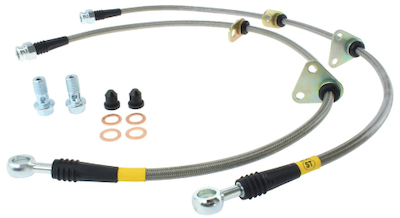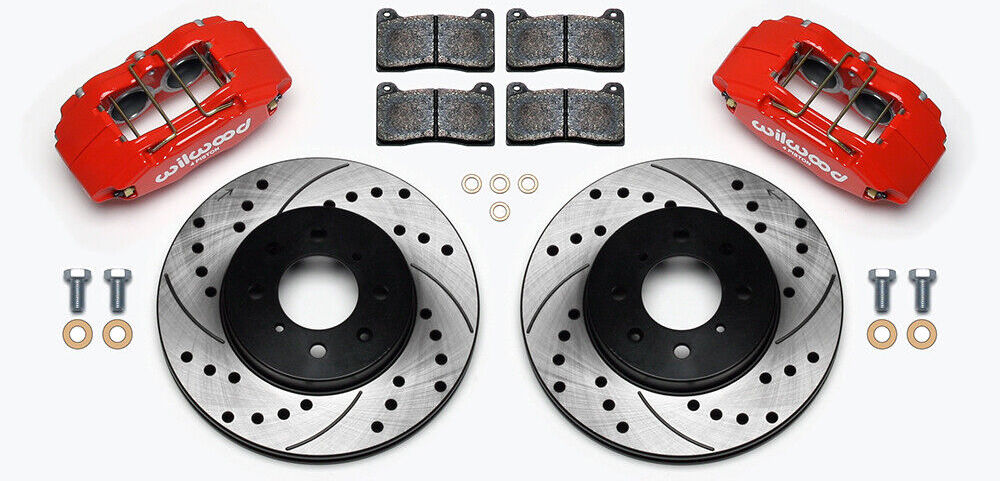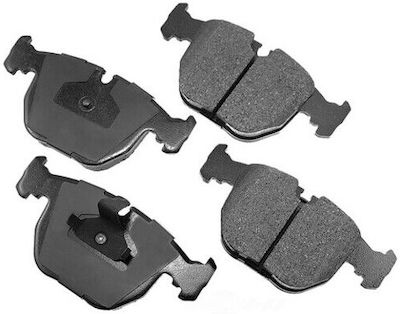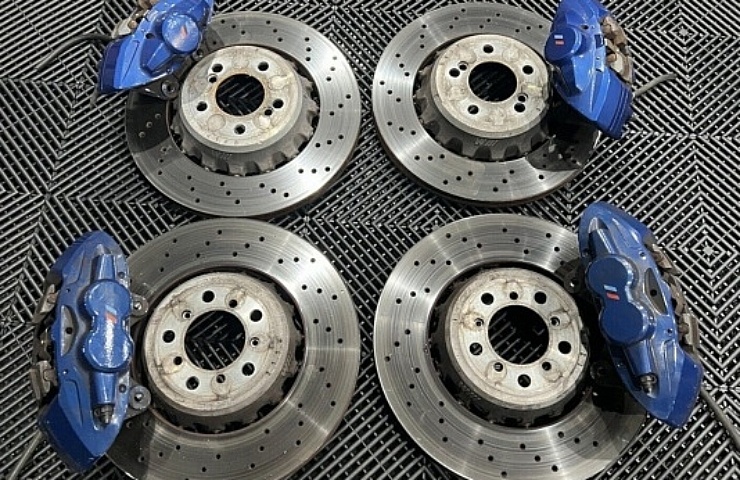Contents
Let’s start by looking at the critical components of any braking system.
- Brake calipers: These mounted parts have an internal piston that puts pressure on the brake pad when the pedal is pushed. Fluid is forced into the piston to create this pressure.
- Brake lines: Hydraulic fluid flows through lines to apply pressure to the brake calipers. When you push on the brake pedal, all four wheels use the fluid’s pressure to apply the brakes.
- Brake pads: This wearable component makes contact with the brake rotor. The pressure against the pad’s brake rotor forces the car to slow down.
- Brake rotors: This spinning disc rotates alongside the wheel. There is one attached to each wheel. When the brake pads are engaged, they create friction against the rotor, which slows down the wheels.
These are the parts to consider when considering how to improve brake performance. You can choose higher-quality parts or upgrade them to more robust systems to provide more stopping power.
Shop now for performance brake kitsDrum brakes operate differently, but let’s focus on disc brakes since they are the most common type.
The Causes of Poor Braking Performance
Here are the top reasons why you might not be able to stop your car as quickly as you would like

StopTech stainless steel braided brake lines
- Driving conditions. Pads and rotors become too lubricated when driving through water or mud. Pads and rotors must be dry to establish the right amount of friction.
- Leaking fluid. If hydraulic brake fluid leaks from the lines, stopping power is reduced because the right amount of pressure isn’t applied to the calipers. As the fluid level gets lower, more problems can occur, to the point where you can no longer stop the vehicle.
- Neglect. This is the most common cause. Brakes require regular maintenance. On average, you must change the brake pads every 20,000 to 50,000 miles. Rotors are replaced less frequently, but both pads and rotors need proper care and maintenance.
- Overheating pads. Brake pads overheat due to excessive or extreme use. When the pads get hot, they become brittle and hard. Once this occurs, they no longer grip onto the rotors as intended, increasing the stopping distance.
- Warped rotors. When the rotor surface becomes uneven or damaged, it affects the pads’ life. The surface must be smooth and flat for the pads to work as designed.
- Weight overload. If you put more than the suggested weight in your vehicle, stopping power decreases. You can also damage the brakes by carrying more weight than what’s allowable per the manufacturer’s specifications.
Brake Components To Consider for Improved Performance

Wilwood performance brake kit with drilled and slotted rotors, calipers, and brake pads
Here are a few options that improve braking performance.
- Larger discs allow added brake torque, with the pad applying pressure to a larger radius.
- Larger pistons create more area to apply pressure.
- Brake pad material. Performance brakes are often made from metallic material because it improves friction, which turns into stopping power.
- Vented rotors provide airflow and cooling to keep the brakes from heating up.
- Drilled and slotted rotors allow debris and gases to escape, creating more friction.
- Braided brake lines reduce swelling.
Despite the sleek and sporty appearance of red brake components, these do nothing to increase performance. But, of course, we aren’t discouraging the upgrade because colored brakes make a car look more aggressive.
Are Performance Brakes and Brake Pads Worth It?

Akebono ceramic brake pads for 1995-2005 BMWs
The stock brake system is enough for your vehicle if you don’t push it to the extremes. It’s designed for everyday driving and should be sufficient if you use your vehicle as intended.
Here are a few reasons to buy performance brakes.
- The stock brakes are overheating.
- Your vehicle goes through stock brakes too quickly.
- You are pushing the limits of performance at a race track.
- Horsepower and torque increased by more than 20 percent.
There are a few downsides to performance brakes:
- Performance pads may not last as long. Pads still wear down, but you get better performance from them.
- You may not experience superior stopping power when the brakes are cold. That’s because performance brakes work better once they warm up.
- You may notice added noise after the upgrade.
Can Braking Hard Hurt You or Your Car?
It’s harmful to brake hard in several important ways:
- Reduced fuel economy. Aggressive driving burns more fuel, causing you to fill up more frequently. That adds to your monthly cost at the pumps.
- Tire damage. Flat-spotting occurs when the wheels lock up and the car skids across the road.
- Brake damage. Pads become overheated, leading to premature wear. It can also lead to damaged brake lines and leaking fluid.
- Driveshaft damage. The driveshaft can be knocked out of alignment since it’s a ball and socket that connects the wheels to the engine.
- Reduces safety. Sudden braking can cause the driver behind you to rear-end your vehicle.
It’s best to anticipate the road ahead and slow down at a measured pace.
Shop now for Brembo brakesWhat Are the Four Main Braking Techniques?
Consider one or more of these four braking techniques to slow down safely and avoid accidents. The first three methods work without an anti-lock brake system (ABS). Only threshold braking works with ABS.
- Avoidance braking. If you’ve locked up the wheels and the car starts going in the wrong direction, apply a slight turn to the steering wheel, but not too much. Release the brakes and make minor wheel adjustments as needed. Oversteering in this situation is easy, so it’s only recommended for emergencies.
- Cadence braking. When traveling on a low-grip surface, apply and release the brakes in a stutter fashion. When the wheels are locked, you slow down but can’t steer. Every time you release the brake, it gives you the time to regain the ability to steer before re-applying the brakes.
- Locked wheel braking. It’s challenging to maintain brake pressure on icy roads. However, you’ll be unable to steer while the wheels are locked, so be sure you are moving in the right direction. As you feel the car start to slide, you make small corrections to the steering wheel, while gently pumping the brake. You won’t regain steering control until the car stops sliding, but you’ll be prepared by having the wheel ready and in position.
- Threshold braking. This is the best option to gain maximum performance. You apply maximum pressure until right before the wheels lock up. It’s difficult to tell ahead of time that the wheels are going to lock up. When they do, you move to the instructions given under “locked wheel braking.”
Most of these techniques aren’t necessary for everyday driving. Your best bet is to brake slowly and gently and maintain a reasonable distance from other vehicles, pedestrians, and road elements. The core idea is to avoid unnecessarily quick movements.
Shop now for Wilwood brakes




